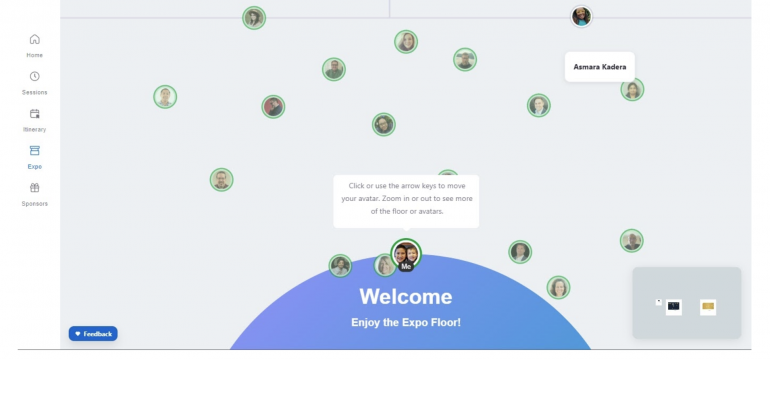Even with most groups eager to get back to face-to-face experiences, digital conference innovation remains in high gear. Last week, Zoom took a deeper dive into online events with the release of Zoom Expo, a new feature on its Zoom Events platform.
Zoom, the 10-year-old company that almost singlehandedly brought group video calls into the mainstream, started in the events arena in fall 2020, with OnZoom. That product allowed businesses to sell tickets to their events but didn’t offer robust meeting features. In mid-2021, Zoom took the next step with Zoom Events. That platform can run large-scale internal and external events over multiple days with multiple tracks, and gather data on event registration, attendance, revenue, and more.
The new Expo tool, available to anyone with a Zoom Events license, allows organizers to create a 2D show floor where attendees can move around, network, and visit booths.
In a Zoom Expo, attendees, speakers, and exhibitors are represented as dots, with the person’s photo in the center of the dot. Attendees can navigate around the event using their mouse or arrow key and start a one-on-one chat with anyone who has enabled networking, indicated by a green ring around their avatar.
In Expo’s virtual booths, attendees can chat with exhibitors, watch videos, download PDFs, or move into breakout rooms for face-to-face discussions. Expo can handle a maximum of 1,000 attendees, and it allows for 100 sponsored booths and unlimited unsponsored booths
Organizers looking for a do-it-yourself digital expo tool will appreciate the relative simplicity of the system. Zoom has extensive information on using the Expo Builder and free on-demand courses. However, planners should know that the tool provides for limited customization and has only three tiers of sponsorship (which equate to the number of spaces available to the sponsor on the show floor).
Expo wasn’t the only change to Zoom Events last week. Among other upgrades, planners can now add a video to an event’s waiting room, set a default virtual background that will reset at the beginning of each meeting, and allow language interpretation as a default option, meaning that attendees will be able to select the language of their choice for an event.





